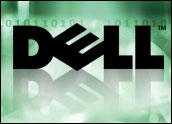
Last week, IBM announced the new Smart Analytics System, a fine-tuned solution for analyzing both structured information in databases and unstructured, often incompatible data from sources such as blogs, emails, information archives, podcasts, videos, Web sites and wikis.
The Smart Analytics System can solve complex business problems as much as three times faster than other products, according to the company, while requiring up to 50 percent less storage. In addition, the systems are designed to be deployed and managed with a fraction of the time and effort required by traditional business analytics solutions.
In a separate announcement, IBM said it had entered into a definitive merger agreement to acquire SPSS, a leading provider of predictive analytics software and solutions, in an all-cash transaction valued at approximately US1.2 billion. Following the close of the acquisition, IBM intends to fold SPSS into its Information Management software portfolio, and integrate it with existing offerings. Predictive analytics will also be an essential component of IBM’s smarter business systems solutions. Mh3>Taken together, IBM’s announcements qualified as a notable addition to the company’s information management efforts, but will their influence stop there? We think not. “IT” may be the high-tech industry’s acronym of choice, but most vendors emphasize technology over information. This is understandable enough — the salad days of high tech were (and often still are) defined by successions of bigger, faster computers.
However, that techno-centric worldview ignores a crucial point: Without information, without adding value to information through analysis, evolving technology is a bigger, faster car on a road to nowhere.
Better Toolbox
This is an increasingly critical issue as organizations create and store ever larger volumes of structured and unstructured data, and as information technologies extend to and are embedded within a widening array of devices and processes. In these scenarios, including IBM’s vision of a smarter planet, the whole world will eventually become wired. Yet what is the best way to collect, collate and analyze information from such an enormous, globally distributed system?
For IBM, enhancing the value of information analytics is very old hat. The company introduced the original model for relational databases in 1969 and delivered its DB2 database solution on the mainframe in 1983. During the past six years, the company has reached numerous analytics milestones, including unstructured data analytics (UIMA — 2004), entity Analytics (2005), the acquisition of Cognos and delivery of System S InfoSphere Streams (2008) and Business Analytics Optimization (BAO) practices and services (2009).
That provides the historical context for both IBM’s Smart Analytics System and the SPSS acquisition. The first aims to leverage the company’s hardware, software and middleware resources, along with its deep integration and research expertise, into an optimized, elegant and effective business analytics tool. Sectors IBM is likely to initially target with the Smart Analytics system — financial services, healthcare, telecommunications, retail and government — all need better tools to manage and gain full value from massive volumes of highly complex information.
Lower Costs, Greater Synergies
The new offerings also highlight significant financial and strategic opportunities. IBM noted that the market for business optimization is growing at nearly three times the rate of traditional business automation (8 percent vs. 3 percent). That does not mean that optimized solutions like the Smart Analytics System will replace traditional servers and storage, but they do represent billions of dollars in potential sales and fit particularly well within IBM’s broader dynamic infrastructure strategy.
Optimizing these systems prior to deployment should help clients contain or lower IT ongoing operations expenses which far outweigh acquisition costs. Those features are bound to attract the attention of enterprises whose IT budgets are tight or shrinking. As a result, the future of other optimized systems IBM is planning — for areas such as application development and testing, business services, collaboration, virtual desktops and virtual infrastructure — could be very bright indeed.
SPSS has obvious synergies with the new Smart Analytics System. The company is a leading vendor in predictive modeling and statistical analysis, disciplines that help organizations move from a reactive “sense and respond” mode of data interaction to a proactive “predict and perform” approach — capabilities that can help organizations reduce risk and expenses, and increase profitability.
In short, SPSS and the Smart Analytics System offerings play to IBM’s strengths and support strong alternatives to traditional business analytics systems. Overall, IBM’s are announcements intriguing and laudable. Both qualify as innovative steps in the company’s business analytics journey, and both should bring significant value to IBM and its enterprise customers.
E-Commerce Times columnist Charles King is principal analyst for Pund-IT, an IT industry consultancy that focuses on how business technology evolution affects vendors, their customers, and the marketplace.






















































The significance of IBM announcement of Smart Analytics is that they build institutional credence in the importance of finding hidden value in unstructured data. This is a fast growing area and it is just the beginning.